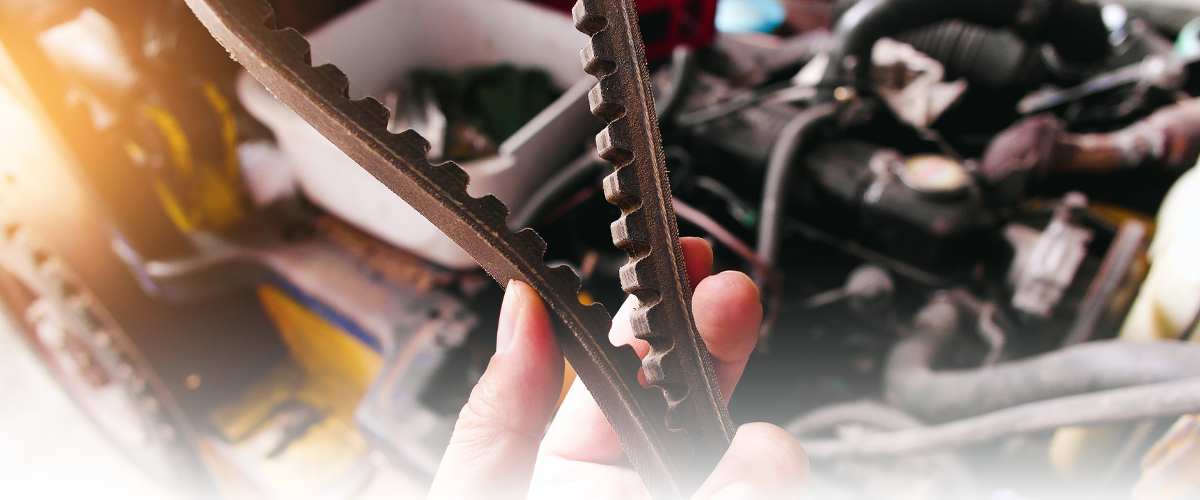How To Replace Car Timing Belt?
29th Jul 2024

Is your car's timing belt wearing out? If you don't replace the timing belt now, you might face significant engine problems and expensive repairs. The timing belt function is crucial for keeping your engine running smoothly.
Wondering how to replace the timing belt yourself? Learn how to replace the timing belt and keep your car running efficiently? This blog post will show you the simple steps to replace the timing belt, ensuring you understand the timing belt function and how to perform the replacement correctly.
Let’s get started!
When To Replace The Timing Belt?
Replacing the timing belt is a vital maintenance step to ensure your car runs reliably and efficiently, maintaining the proper timing belt function. Typically, car manufacturers recommend changing the timing belt based on specific mileage or time intervals, usually between 60,000 and 80,000 miles, or about every 5 to 7 years.
Delaying this service can lead to a broken timing belt, which often results in severe engine damage and costly repairs. Always refer to your vehicle’s owner’s manual for the most accurate guidelines.
Here are three clear signs that it might be time to replace the timing belt in your car:
- Engine Misfires: A worn-out timing belt can affect the engine's timing, causing it to misfire and compromising the timing belt function. This occurs when the belt has slipped on the camshaft drive and is not rotating the camshafts at the correct timing.
- Ticking Noise from the Engine: If you hear a ticking noise coming from the engine, it could be a sign that the timing belt is worn out and needs replacement. This noise is usually caused by a loose or damaged belt that needs to be replaced.
- Engine Won't Turn Over: If the engine fails to turn over when you start the car, a broken timing belt could be the culprit, indicating the need to replace the timing belt immediately. This failure prevents the engine from turning over and starting as the timing belt is essential for the crankshaft to operate.
Tools You Need To Replace Car Timing Belt
Here’s a list of essential tools you'll need to replace the timing belt in your car:
- Socket Set: A socket set with various sockets and a ratchet is crucial for removing bolts and components in the engine bay when you replace the timing belt.
- Torque Wrench: A torque wrench ensures that all bolts are tightened to the specified torque settings, which is critical for engine timing and overall timing belt function.
- Screwdrivers: Both flathead and Phillips screwdrivers will be needed for accessing and removing various components.
- Timing Belt Kit: This usually includes the timing belt itself along with tensioners and pulleys that should also be replaced simultaneously.
- Camshaft Lock Tool: This tool holds the camshaft in place while the belt is being replaced, ensuring proper timing alignment.
- Crankshaft Pulley Holder: Necessary for holding the crankshaft pulley in place while loosening or tightening the crankshaft bolt.
- Jack and Jack Stands: These are required to safely lift and support the vehicle if needed, especially when working under the engine area.
- Work Light: Good lighting is essential, as replacing a timing belt often requires working in poorly lit areas of the engine compartment.
Having these tools at your disposal will help you execute the timing belt replacement with precision, ensuring your vehicle's engine operates smoothly and efficiently.
How To Replace Car Timing Belt? Step-by-Step Process
Follow the below given step-by-step guide to ensure you correctly replace the timing belt and maintain its essential timing belt function.
Step 1: Access the Timing Belt
To access and replace the timing belt, remove the engine cover and detach any components that block access, such as the fan belt or radiator hoses. This will give you clear access to the timing belt area.
Examine the old timing belt for signs of wear or damage. Understanding the timing belt function is important—it synchronizes the movement of the engine's camshaft and crankshaft, ensuring the engine runs smoothly.
Step 2: Remove and Replace the Timing Belt
Carefully loosen the bolts on the tensioner pulley to remove the old timing belt, a critical part of the timing belt replacement process. Ensure that the engine's timing is not disturbed during this step to avoid complications and maintain the timing belt function.
When installing the new timing belt, align it precisely with the timing marks on both the camshaft and crankshaft pulleys. This alignment is crucial for maintaining the timing belt function and ensuring there are no twists in the belt during the timing belt replacement process.
Step 3: Tension and Reassemble
Adjust the tensioner so that the new timing belt has the correct tension, which is vital for the belt’s durability and the smooth operation of the engine. It should be tight enough to replace the timing belt effectively without being overstressed.
Reassemble all components you previously removed during the timing belt replacement process. Ensure everything is secured and tightened according to the manufacturer's specifications.
Step 4: Test and Check
After you replace the timing belt, reconnect the battery and start the engine to ensure it runs smoothly, verifying the timing belt function. This test is crucial to verify that the timing belt function has been restored and that the engine timing is correctly set.
Double-check your work to ensure there are no leaks, the timing belt is properly aligned, and all parts are securely refitted. Regular checks and timely actions to replace the timing belt are essential to prevent severe engine damage and maintain optimal vehicle performance.
FAQs
1. How often should I replace my car's timing belt?
The frequency for replacing a timing belt varies by car model and manufacturer, but typically, it is recommended to replace the timing belt every 60,000 to 100,000 miles. Always refer to your vehicle’s owner’s manual for the specific interval tailored to your model.
2. What are the signs that my timing belt needs to be replaced?
Key indicators that it’s time to replace the timing belt include a ticking noise coming from the engine, the engine won't turn over, the engine misfires, or you notice oil leakage around the motor. These signs suggest that the timing belt function may be compromised.
3. What happens if I don't replace my timing belt?
Neglecting to replace the timing belt can lead to a complete belt failure, which often causes severe engine damage that is expensive to repair. Since the timing belt function is to synchronize the engine components, its failure can result in piston and valve damage, leading to costly repairs or even engine replacement.
Shop JB Tools And Save On Your Next DIY Project
At JB Tools, we're dedicated to supporting your DIY automotive projects with top-quality tools at unbeatable prices. Find everything you need, from socket sets to screwdrivers and torque wrenches, to smoothly handle your next timing belt replacement and other car maintenance tasks.
Enjoy a special 20% discount on all tools to help you with timing belt replacement and other engine work. Shop at JB Tools to save money while ensuring your vehicle stays in peak condition with our reliable, durable tools.

